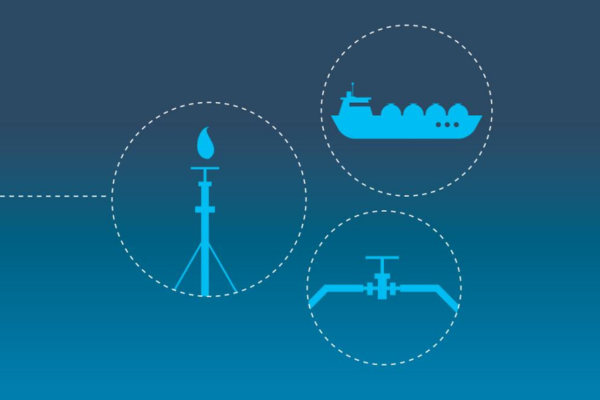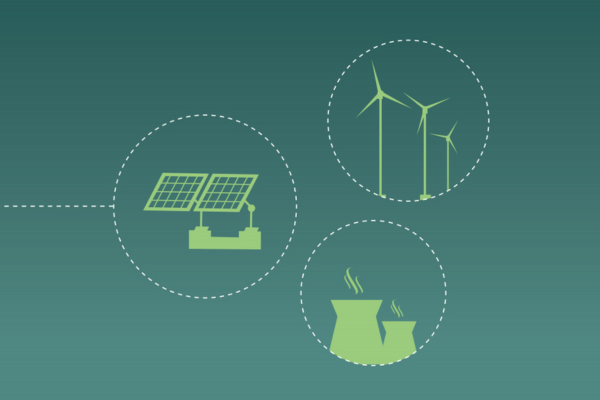Gas and electricity market reports
Energy prices have a significant impact on household expenditures, industrial costs and business competitiveness. In a liberalised market, monitoring market prices has become increasingly important for analysts, policymakers and businesses alike.
The EU quarterly gas and electricity market reports analyse market data in detail to examine trends and challenges. The reports explore the main factors behind price and volume variations and the interaction between market actors.
Every 2 years, a report on energy prices and costs in Europe is published, taking stock of the recent trends for gas, electricity and oil prices, as well as other energy costs.
Gas market - recent developments

In 2023, gas supply in European markets became more diversified, secure and affordable.
Strengthened LNG imports, sustained robust gas storage levels and lower gas consumption resulted in lower needs for imports, the return of wholesale prices to historic levels and a moderation of retail prices. Overall imports declined in 2023, with reduced pipeline imports but higher volumes of LNG imports.
The U.S. share in the EU’s LNG imports increased both annually and quarterly, reaching up to 50% in the last quarter of the year. The share and volume of Russian gas was further reduced, with the market share of Russian pipeline gas being seized by Norway, which provided half of EU pipeline gas in the fourth quarter of 2023. The EU remained the largest LNG importer in the world ahead of China and Japan.
According to the gas market report, the EU gas consumption fell again in 2023 and was 7% lower than in 2022 and 20% lower than in 2021. The EU’s consumption in the last quarter of 2023 (Q4 2023, onwards) rose by 71% (to 96 bcm) as compared with the previous quarter, reflecting the seasonally higher winter demand.
EU domestic gas annual and quarterly production further declined, covering only 11% of the EU’s consumption in 2023. In 2023, the annual production was 38 bcm, 20% lower than in 2022 and 26% lower than in 2021. In Q4 2023, production was 8 bcm, 5% less than in the previous quarter.
EU gas storage levels reached new record highs. In 2023, the average gas storage filling rate was 79%, 30% higher than in 2022 and 49% higher than in 2021. The average filling rate in Q4 2023 was 95%, 8% higher than in the previous quarter.
EU gas imports amounted to 290 bcm in 2023, 13% less than in 2022 (335 bcm) and 14% less than in 2021 (336 bcm). The largest gas suppliers to the EU were Norway (30% of EU gas imports), the US (19%), Russia (15%), North-Africa (14%), UK (6%), Qatar 5%, Azerbaijan 4% and Nigeria 3%. In Q4 2023, EU gas imports amounted to 74 bcm, 9% more than in the previous quarter. Pipeline gas accounted for 59% of the EU imports and LNG for 41%.
The EU’s total pipeline gas imports in 2023 was 169 bcm, 22% less than in 2022 and 37% less than in 2021. In Q4 2023, EU pipeline imports amounted to 44 bcm, 7% more than in the previous quarter. Norway remained the EU’s largest pipeline gas supplier increasing its share to 50% (46% in the previous quarter).
In 2023, EU LNG imports amounted to 121 bcm, 3% more than in 2022 and 78% more than in 2021. The largest LNG importers in the EU were France (22%, 27 bcm), Spain (18%, 23 bcm) and the Netherlands (17%, 21 bcm). The largest LNG exporters to the EU were the US (46% share, 56 bcm), Russia (15%, 18 bcm) and Qatar (13%, 16 bcm).
In Q4 2023, the EU’s LNG import was 31 bcm, 11% higher quarter-on-quarter and 7% lower year-on-year. In that quarter, the U.S. share of EU LNG imports rose to 50% (47% in the previous quarter). Russia was second with 16% and Qatar third with 12%. Globally, the EU was the largest LNG importer with a 26% share in global LNG imports in 2023, ahead of China and Japan.
In 2023, Russian gas represented 15% (43 bcm) of the EU’s total gas imports, from 24% (79 bcm) in 2022 and 45% (150 bcm) in 2021. In Q4 2023, Russian gas accounted for 17% of EU’s total gas imports, while the share of Russian pipeline gas in EU pipeline imports was 18% and the share of Russian LNG in EU LNG imports was 16%.
In 2023, European wholesale gas prices fell by 67%. In Q4 2023, wholesale prices displayed considerable volatility, continuing the rise that started in the 3rd quarter and peaking at 55 €/MWh in mid-October before declining in November and December to reach 30€/MWh on the last trading day of the year. The quarterly average price was 41€/MWh, 24% higher quarter-on-quarter, but 57% lower year-on-year.
In Q4 2023, European gas prices were 13% lower on average than Asian prices, while they were 17% higher in the same quarter of 2022. Quarter-on-quarter, prices increased on all major global benchmarks by between 11% and 28%, the biggest increase being registered in Europe and the smallest in the U.S. Year-on-year global benchmarks declined by between 53% (Asian JKM) and 65% (Dutch TTF).
In Q4 2023, gas retail prices for households stopped falling and started to rise. The quarterly average price was 110 €/MWh, 2% higher than in the 3rd quarter and 31% lower year-on-year. In 2023, the average gas retail price was 116€/MWh, 17% lower than in 2022 (139€/MWh) and 55% higher than in 2021 (75€/MWh).
EU quarterly gas market reports
The older reports (2008-2020) are available in a dedicated CIRCA BC
Electricity market - recent developments

2023 was marked by a continuation of positive market fundamentals that supported lower wholesale electricity prices. The European Power Benchmark averaged 95 €/MWh in 2023 – 57% lower than in 2022.
On a yearly basis, prices ranged from 51 €/MWh in Sweden to 128 €/MWh in Italy. The largest year-on-year price falls at national level were registered in France (-65%), and Finland (-63%).
In Q4 2023, markets experienced a decline in wholesale electricity prices (ranging from -67% to -34%). In Q4 2023, the European Power Benchmark averaged 83 €/MWh, 55% lower on a yearly basis.
The share of electricity generated by renewables increased to 44% in 2023 (from 38% in 2022), while the share of fossil fuels fell significantly to 32% (from 39% in 2022). Solar and wind registered +15% in generation in 2023 (+87 TWh). Onshore wind generation rose by 14% (+51 TWh) and solar generation surged by 19% (+31 TWh). Hydropower improved its output by 17% (+49 TWh), while offshore wind generation rose by 10% (+5 TWh).
A new record of installed renewable capacity was reached in the EU in 2023, with added solar and wind capacity having increased by 14% on a yearly basis (from 320 TW in 2022, to 365 TW in 2023). Solar installed capacity rose by 22%, while onshore and offshore wind grew by 8% and 11%, respectively.
Fossil fuel generation dropped by 24% in 2023. Coal-fired generation fell by 28% (-118 TWh), whereas less CO2-intensive gas generation dropped by 20% (-88 TWh). The fall in fossil fuel generation was supported by lower demand and sustained renewables generation. Nuclear output rose by 2% (+9 TWh) in 2023.
The EU’s electricity consumption fell (-3%) in 2023 compared with last year’s levels. Despite the decline observed in electricity consumption throughout the year, Q4 2023 consumption registered a small year-on-year (+2%) increase.
EU quarterly electricity market reports
The older reports (2008-2020) are available in a dedicated CIRCA BC.
Energy data centre
Consistent and accurate data is very important for a reliable analysis that can be used to develop energy policies or investment planning.
For data and analysis, the Directorate-General for Energy relies on the Market Observatory for Energy, which maintains and operates the Energy market observation system (EMOS), a database of information collected from a wide range of private and public entities.
